Fukushima Falling Apart. Via Rense. Excerpts:
It’s been a month since the 9.0 Earthquake, tsunami, and the first of a series of explosions at the Daiichi reactors. Since that time, Japan has received 980 earthquakes and aftershocks: a number so staggering that it is almost incomprehensible. Numerous explosions have occurred as well, and every day it seems the Japanese nuclear and government official reveal a little more about the true nature of the on-going tragedy at Fukushima.
..
A second JAIF press release is more concerning and revealing. If we read the fine print, we can note that “NISA announced that the reactor pressure vessel of Unit 2 and 3 may have lost air tightness because of low pressure inside the pressure vessel. NISA told that it is unlikely that these are cracks or holes in the reactor pressure vessels at the same occasion. (What?)
Nitrogen gas injection into the Unit 1containment vessel has been continued to reduce the possibility of hydrogen explosion since Apr. 6th. The pressure of the vessel has hardly risen for the past a few days and leakage of the vessel is suspected. The same measure will be taken for Unit 2 and 3.”. It appears that the reactors are continuous leaking, not too surprising given the hydrogen explosions that have rocked the reactors, but here a first confirmation of cracks within the reactors.
While the NHK and the Japanese Educational site on the Nuclear disaster keep us updated on #1 reactor’s pressure, their perception of it is that is has flat-lined. That perception is in sharp contrast to our own view. The current reactor pressure for #1 is 0.908 Mega pascals: a number nine times atmospheric pressure. If it’s cracked, as they Japanese say it is, it may be a double-edged sword. Pressure is being released, but it’s also massively building up.
Hidehiko Nishiyama, a spokesperson for a nuclear agency seems to continue to be wildly optimistic given the circumstances. “Even though some amount of radiation keeps leaking from reactors and their containment vessels, they are not totally destroyed and are functioning” I’m glad that other Japanese are being more transparent in their assessment. I can’t imagine anyone taking the view that they are functioning. In what possible way?
Russia's nuclear chief says Japan exaggerating crisis Huh.
SANYA, China — Japanese authorities may be exaggerating the scope of the country's nuclear disaster to reduce the liabilities of insurance companies, Russia's nuclear chief said on Wednesday.
..
"It is hard for me to assess why the Japanese colleagues have taken this decision. I suspect, this is more of a financial issue, than a nuclear one," Sergei Kiriyenko said on the sidelines of a meeting of major developing economies in southern China.
..
"I guess that maybe it could be linked to the definition of force-majeure with regard to insurance. I would pay attention to that. It is a bit strange," Kiriyenko said without further elaboration.
And:
Several experts have agreed that Japan's new rating exaggerated the severity of the crisis and did not compare with Chernobyl, which blew the roof off a reactor and sent large amounts of radiation across Europe.
Kiriyenko said the damaged plant should have initially been ranked at a 5 or 6, a level he said still matched the severity of the leaking radiation given the current low risk of a blast.
Kiriyenko's agency, Rosatom, is building a slew of reactors at three sites in energy-hungry India, which plans to fuel economic growth with 63,000 megawatts of nuclear power by 2032.
Tsunami Risk Prompts Tepco to Move Fukushima Backup Power to Higher Ground
Tokyo Electric Power Co. will move backup generators at its crippled nuclear plant to higher ground away from the sea to ensure cooling systems aren’t disrupted by future tsunamis, as aftershocks rattle Japan.
“Emergency diesel-powered generators will be moved to higher ground, and work for connecting them into the power distribution unit will be carried out around April 19,” Takeo Iwamoto, a spokesman for the utility known as Tepco, said in Tokyo today. They will be placed 20 meters (66 feet) above sea level, double the current height, according to the company.
Aftershocks Threaten More Damage to Crippled Japan Nuclear Plant Excerpts:
Aftershocks rattling Japan after the nation’s record quake on March 11 may continue for at least six months, increasing the risk of damage to a crippled nuclear plant at the center of the worst nuclear crisis since Chernobyl.
“Aftershocks as big as magnitude-7 are likely to continue hitting in eastern and northern Japan for at least six months,” said Teruyuki Kato, a professor at the University of Tokyo’s Earthquake Research Institute.
Japan defends holding back nuke data Excerpts:
Official says high March radiation level hidden to avoid panic.
Japan's new assessment was based largely on computer models showing very heavy emissions of radioactive iodine and cesium on March 14-16, just after the earthquake and tsunami rendered the plant's emergency cooling system inoperative. The nearly month long delay in acknowledging the extent of these emissions is a fresh example of confused data and analysis from the Japanese, and put the authorities on the defensive.
Burial of Japan reactors trickier than Chernobyl: pump firm Excerpts:
AICHTAL, Germany — Encasing reactors at Japan's Fukushima nuclear plant in concrete would present much more of a challenge than Chernobyl, according to an executive of the firm whose pumps are helping cooling efforts there.
"In Chernobyl, where a single reactor was encased, 11 trucks were in action for a number of months. In Fukushima we're talking about four reactors," Gerald Karch, chief executive of the technical business of unlisted machinery maker Putzmeister, said in an interview with Reuters.
..
"In my opinion, when a closed-circuit cooling system has been developed and successfully set up, there will be no other option but to encase the reactors in concrete," he said.
Radioactive materials detected in more Chinese vegetables
China's Ministry of Health said Wednesday that "extremely low levels" of radioactive isotope iodine-131 had been detected in various kinds of vegetables in 12 provincial regions.
The radioactive isotope was found in spinach, asparagus, lettuce, cabbage, Chinese cabbage and other vegetables in Beijing, Tianjin, Hebei, Shanghai, Jiangsu, Zhejiang, Shandong, Henan, Hunan, Guangdong, Guangxi and Hainan, according to a statement from the ministry.
"The detected amounts pose no threat to public health," said the statement, adding that a sample survey indicated no abnormality in drinking water. On both counts: Of course not.
It’s been a month since the 9.0 Earthquake, tsunami, and the first of a series of explosions at the Daiichi reactors. Since that time, Japan has received 980 earthquakes and aftershocks: a number so staggering that it is almost incomprehensible. Numerous explosions have occurred as well, and every day it seems the Japanese nuclear and government official reveal a little more about the true nature of the on-going tragedy at Fukushima.
..
A second JAIF press release is more concerning and revealing. If we read the fine print, we can note that “NISA announced that the reactor pressure vessel of Unit 2 and 3 may have lost air tightness because of low pressure inside the pressure vessel. NISA told that it is unlikely that these are cracks or holes in the reactor pressure vessels at the same occasion. (What?)
Nitrogen gas injection into the Unit 1containment vessel has been continued to reduce the possibility of hydrogen explosion since Apr. 6th. The pressure of the vessel has hardly risen for the past a few days and leakage of the vessel is suspected. The same measure will be taken for Unit 2 and 3.”. It appears that the reactors are continuous leaking, not too surprising given the hydrogen explosions that have rocked the reactors, but here a first confirmation of cracks within the reactors.
While the NHK and the Japanese Educational site on the Nuclear disaster keep us updated on #1 reactor’s pressure, their perception of it is that is has flat-lined. That perception is in sharp contrast to our own view. The current reactor pressure for #1 is 0.908 Mega pascals: a number nine times atmospheric pressure. If it’s cracked, as they Japanese say it is, it may be a double-edged sword. Pressure is being released, but it’s also massively building up.
Hidehiko Nishiyama, a spokesperson for a nuclear agency seems to continue to be wildly optimistic given the circumstances. “Even though some amount of radiation keeps leaking from reactors and their containment vessels, they are not totally destroyed and are functioning” I’m glad that other Japanese are being more transparent in their assessment. I can’t imagine anyone taking the view that they are functioning. In what possible way?
Russia's nuclear chief says Japan exaggerating crisis Huh.
SANYA, China — Japanese authorities may be exaggerating the scope of the country's nuclear disaster to reduce the liabilities of insurance companies, Russia's nuclear chief said on Wednesday.
..
"It is hard for me to assess why the Japanese colleagues have taken this decision. I suspect, this is more of a financial issue, than a nuclear one," Sergei Kiriyenko said on the sidelines of a meeting of major developing economies in southern China.
..
"I guess that maybe it could be linked to the definition of force-majeure with regard to insurance. I would pay attention to that. It is a bit strange," Kiriyenko said without further elaboration.
And:
Several experts have agreed that Japan's new rating exaggerated the severity of the crisis and did not compare with Chernobyl, which blew the roof off a reactor and sent large amounts of radiation across Europe.
Kiriyenko said the damaged plant should have initially been ranked at a 5 or 6, a level he said still matched the severity of the leaking radiation given the current low risk of a blast.
Kiriyenko's agency, Rosatom, is building a slew of reactors at three sites in energy-hungry India, which plans to fuel economic growth with 63,000 megawatts of nuclear power by 2032.
Tsunami Risk Prompts Tepco to Move Fukushima Backup Power to Higher Ground
Tokyo Electric Power Co. will move backup generators at its crippled nuclear plant to higher ground away from the sea to ensure cooling systems aren’t disrupted by future tsunamis, as aftershocks rattle Japan.
“Emergency diesel-powered generators will be moved to higher ground, and work for connecting them into the power distribution unit will be carried out around April 19,” Takeo Iwamoto, a spokesman for the utility known as Tepco, said in Tokyo today. They will be placed 20 meters (66 feet) above sea level, double the current height, according to the company.
Aftershocks Threaten More Damage to Crippled Japan Nuclear Plant Excerpts:
Aftershocks rattling Japan after the nation’s record quake on March 11 may continue for at least six months, increasing the risk of damage to a crippled nuclear plant at the center of the worst nuclear crisis since Chernobyl.
“Aftershocks as big as magnitude-7 are likely to continue hitting in eastern and northern Japan for at least six months,” said Teruyuki Kato, a professor at the University of Tokyo’s Earthquake Research Institute.
Japan defends holding back nuke data Excerpts:
Official says high March radiation level hidden to avoid panic.
Japan's new assessment was based largely on computer models showing very heavy emissions of radioactive iodine and cesium on March 14-16, just after the earthquake and tsunami rendered the plant's emergency cooling system inoperative. The nearly month long delay in acknowledging the extent of these emissions is a fresh example of confused data and analysis from the Japanese, and put the authorities on the defensive.
Burial of Japan reactors trickier than Chernobyl: pump firm Excerpts:
AICHTAL, Germany — Encasing reactors at Japan's Fukushima nuclear plant in concrete would present much more of a challenge than Chernobyl, according to an executive of the firm whose pumps are helping cooling efforts there.
"In Chernobyl, where a single reactor was encased, 11 trucks were in action for a number of months. In Fukushima we're talking about four reactors," Gerald Karch, chief executive of the technical business of unlisted machinery maker Putzmeister, said in an interview with Reuters.
..
"In my opinion, when a closed-circuit cooling system has been developed and successfully set up, there will be no other option but to encase the reactors in concrete," he said.
Radioactive materials detected in more Chinese vegetables
China's Ministry of Health said Wednesday that "extremely low levels" of radioactive isotope iodine-131 had been detected in various kinds of vegetables in 12 provincial regions.
The radioactive isotope was found in spinach, asparagus, lettuce, cabbage, Chinese cabbage and other vegetables in Beijing, Tianjin, Hebei, Shanghai, Jiangsu, Zhejiang, Shandong, Henan, Hunan, Guangdong, Guangxi and Hainan, according to a statement from the ministry.
"The detected amounts pose no threat to public health," said the statement, adding that a sample survey indicated no abnormality in drinking water. On both counts: Of course not.










































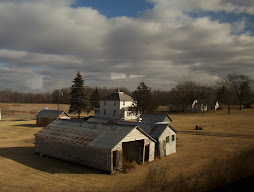




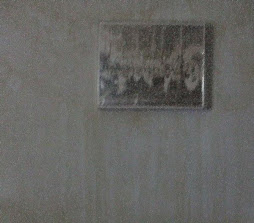






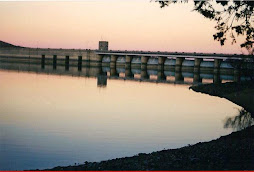







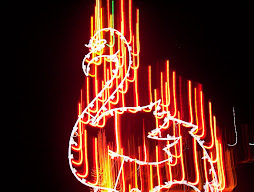




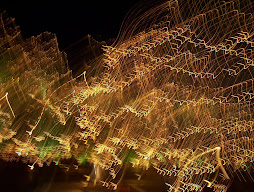












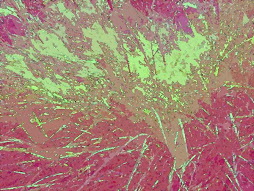
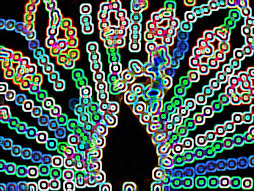









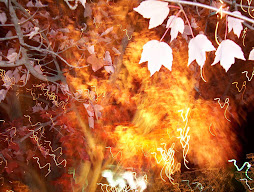













No comments:
Post a Comment